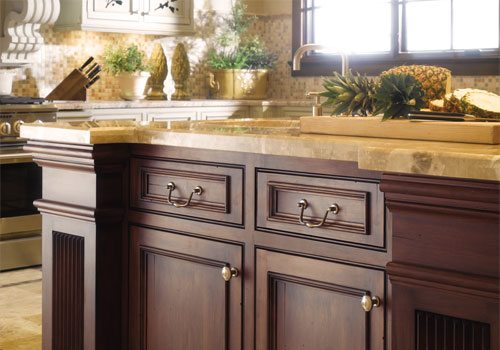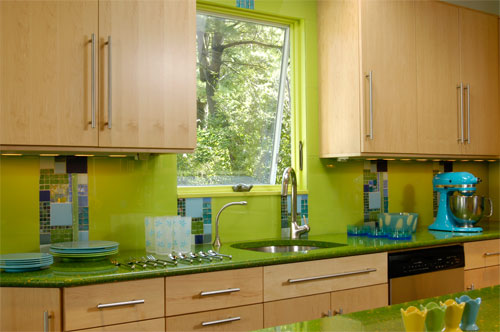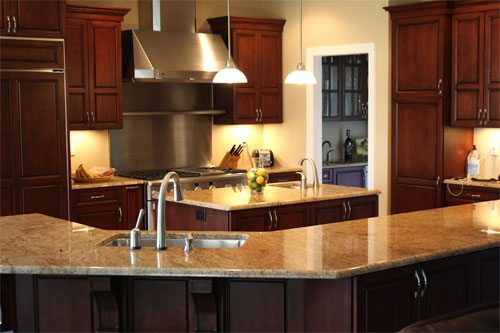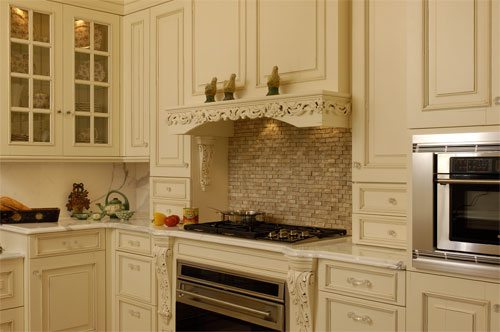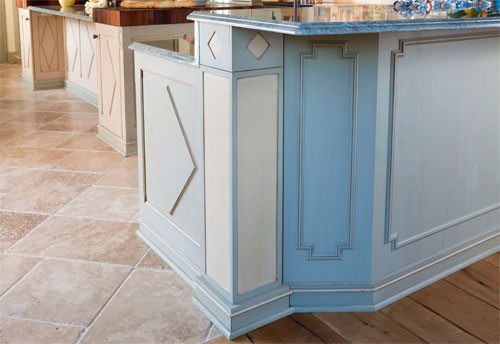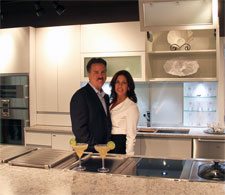Choosing a countertop edge detail! As in any project or undertaking in the home, there are many decisions and choices to be made. Yes, it can be time consuming and frustrating to have to have to make a decision on every aspect in the design, but as we all know, it is those finer details that can really take a project to that “wow” factor. One of those decisions will be selecting a countertop edge detail. There are a few things to consider such as design style, function, and safety. Although there are many different countertop edge designs to choose from, below is a sampling of the most common. Note that the names can vary slightly depending on the fabricator…
 Beveled Edge – With its sleek and angled look, the beveled edge is a popular edge detail in more contemporary designs. It has a clipped flat corner, usually on a 45-degree angle. This edge is easy to clean with its flat design. It’s not so easy on the elbows when leaning on the counter top, as it has sharp edges. Spillage will trickle down onto the floor, as the bottom edge comes to a point. Crisp and Sleek.
Beveled Edge – With its sleek and angled look, the beveled edge is a popular edge detail in more contemporary designs. It has a clipped flat corner, usually on a 45-degree angle. This edge is easy to clean with its flat design. It’s not so easy on the elbows when leaning on the counter top, as it has sharp edges. Spillage will trickle down onto the floor, as the bottom edge comes to a point. Crisp and Sleek.
 Bullnose Edge – The bullnose edge is one of the most popular edge details, as it complements any design style and looks great on any stone. It has a rounded edge from top to bottom and gives a very soft look. The bullnose edge is also easy when it comes to cleaning, as there is no extra detail or groove. Spillage will not trickle down onto the floor, as it will follow the roundness underneath. It’s also easy on the elbows when leaning on the countertop because there is no sharp edge, making it ideal if there are kids in the house. Timeless.
Bullnose Edge – The bullnose edge is one of the most popular edge details, as it complements any design style and looks great on any stone. It has a rounded edge from top to bottom and gives a very soft look. The bullnose edge is also easy when it comes to cleaning, as there is no extra detail or groove. Spillage will not trickle down onto the floor, as it will follow the roundness underneath. It’s also easy on the elbows when leaning on the countertop because there is no sharp edge, making it ideal if there are kids in the house. Timeless.
![]() Demi-Bullnose – The demi-bullnose edge is similar to the bullnose, but instead it is rounded on the top side and has a sharper edge on the bottom. The roundedness also has a wider angle. This edge also works well with any design style and looks great on any stone. The demi-bullnose is also easy to clean, as there is no extra detail or groove. Spillage will trickle down onto the floor, as the bottom edge comes to a point. It’s easy on the elbows when leaning on the countertop because there is no sharp edge at the top. Classic.
Demi-Bullnose – The demi-bullnose edge is similar to the bullnose, but instead it is rounded on the top side and has a sharper edge on the bottom. The roundedness also has a wider angle. This edge also works well with any design style and looks great on any stone. The demi-bullnose is also easy to clean, as there is no extra detail or groove. Spillage will trickle down onto the floor, as the bottom edge comes to a point. It’s easy on the elbows when leaning on the countertop because there is no sharp edge at the top. Classic.
![]() Eased Edge – The eased edge is the most simple of edge details. It is most commonly used in more contemporary designs with its simple flat design. It’s nothing other than a square 90 degree edge with an “easing” of the corners, to make it less harsh than a sharp straight edge. This edge would be the easiest to clean. It will be the most harsh on the elbows when leaning on the edge of the countertop, with its edges being slightly more pointed. Spillage will trickle down onto the floor, as the bottom edge comes to a point. The eased edge will give the countertop the thickest look. Clean and simple.
Eased Edge – The eased edge is the most simple of edge details. It is most commonly used in more contemporary designs with its simple flat design. It’s nothing other than a square 90 degree edge with an “easing” of the corners, to make it less harsh than a sharp straight edge. This edge would be the easiest to clean. It will be the most harsh on the elbows when leaning on the edge of the countertop, with its edges being slightly more pointed. Spillage will trickle down onto the floor, as the bottom edge comes to a point. The eased edge will give the countertop the thickest look. Clean and simple.
![]()
![]() Ogee Edge/Cove Ogee Edge – The ogee edge has more intricate detail making it most commonly used in traditional designs. It typically has 2 curves, but can vary slightly depending on the fabricator. It adds an elegant touch to a more decorative design project. It has more curves and grooves to clean. It is comfortable on the elbows when leaning on the countertop with its roundness. Spillage will trickle down onto the floor, as the bottom edge comes to a point. The ogee edge gives the thinnest appearance. Traditional and elegant.
Ogee Edge/Cove Ogee Edge – The ogee edge has more intricate detail making it most commonly used in traditional designs. It typically has 2 curves, but can vary slightly depending on the fabricator. It adds an elegant touch to a more decorative design project. It has more curves and grooves to clean. It is comfortable on the elbows when leaning on the countertop with its roundness. Spillage will trickle down onto the floor, as the bottom edge comes to a point. The ogee edge gives the thinnest appearance. Traditional and elegant.
Of course there are many more edges to choose from out there, and the style and names can vary. It’s a matter of choosing the right one for you and your design style. Take your time and think it through as your countertop edge will stay with you as long as your countertop does!

